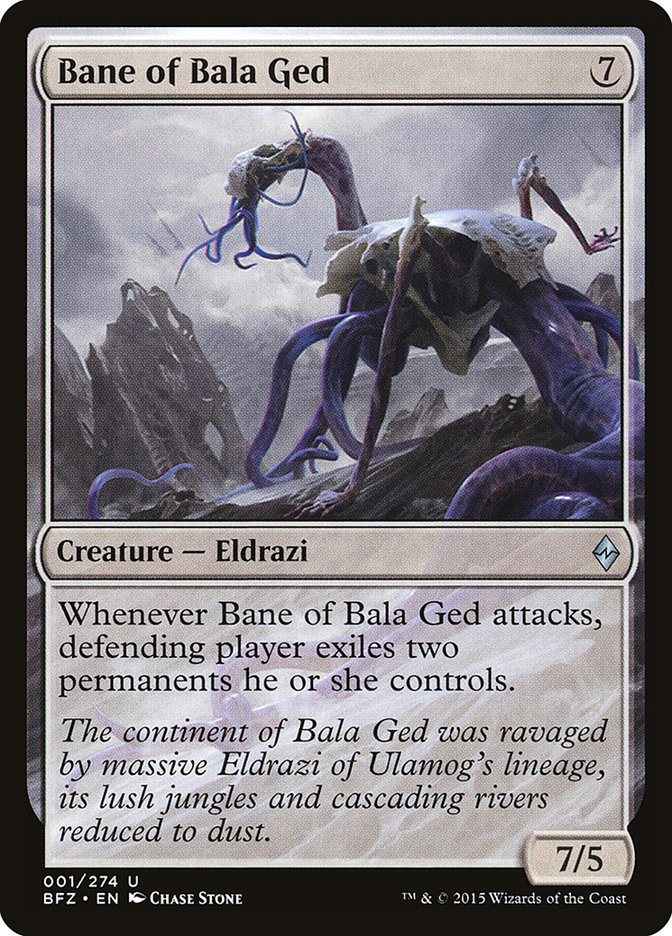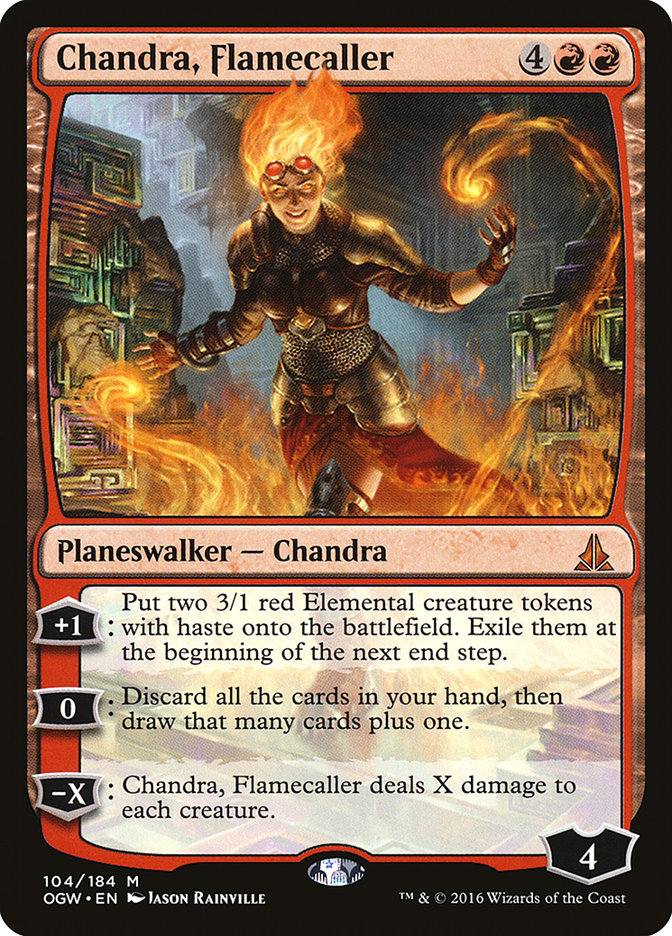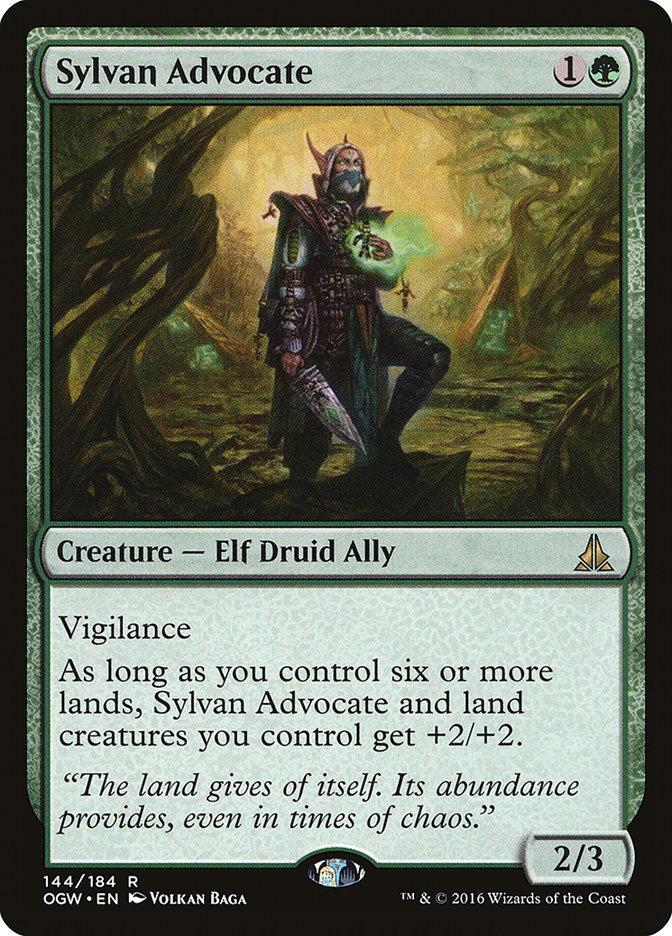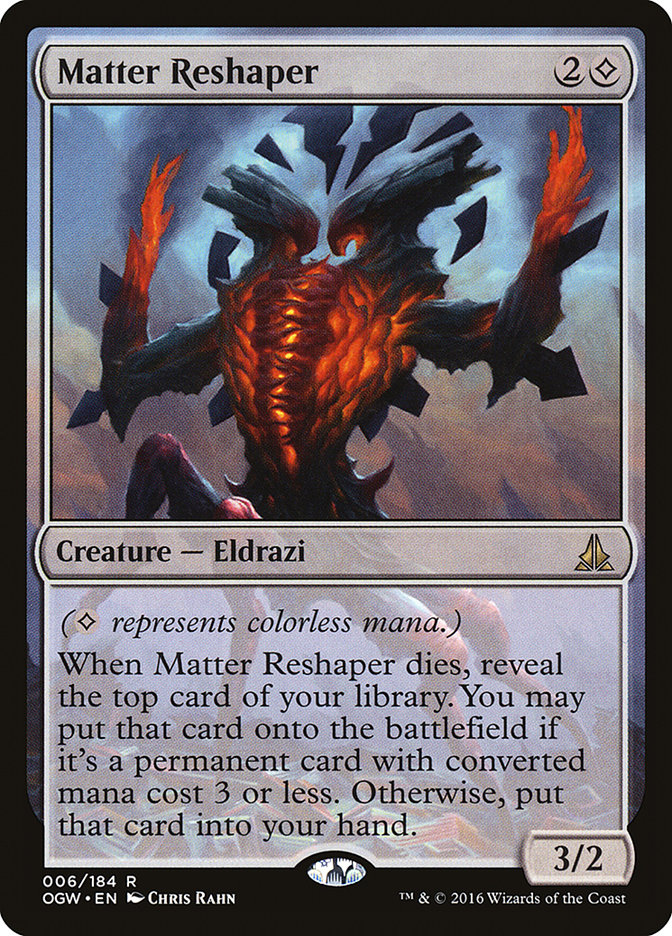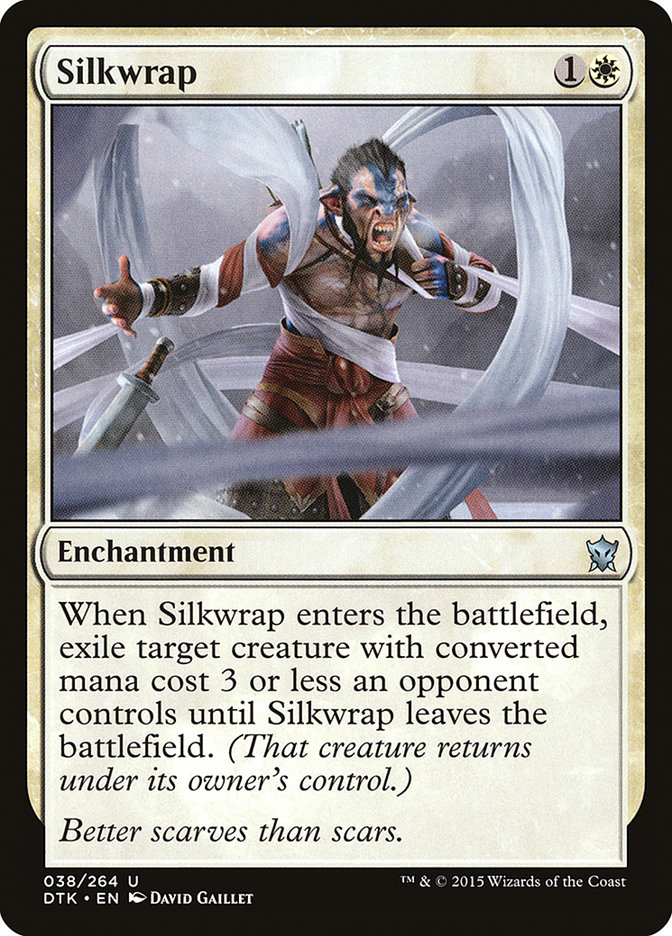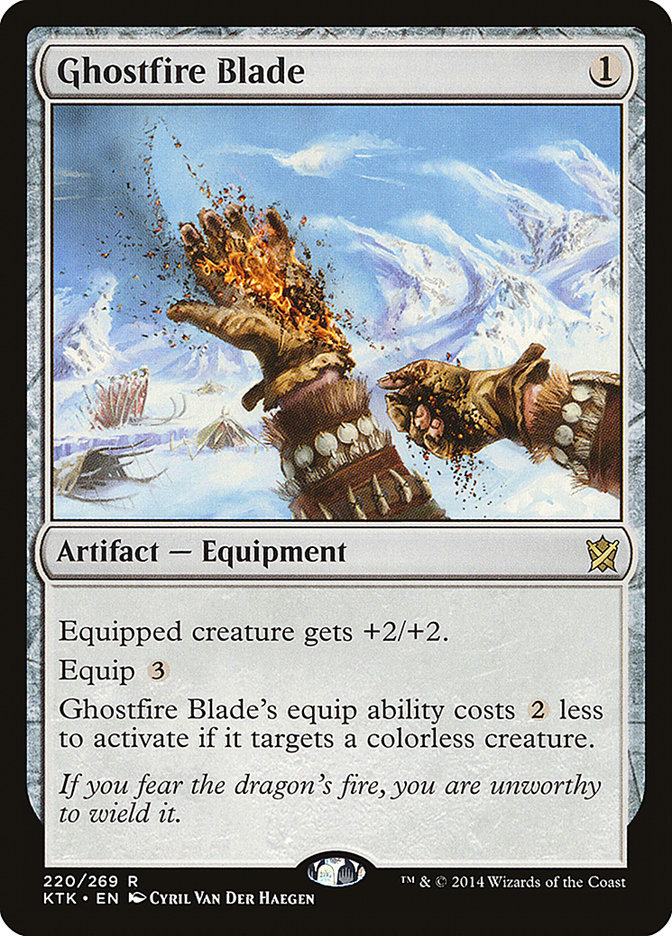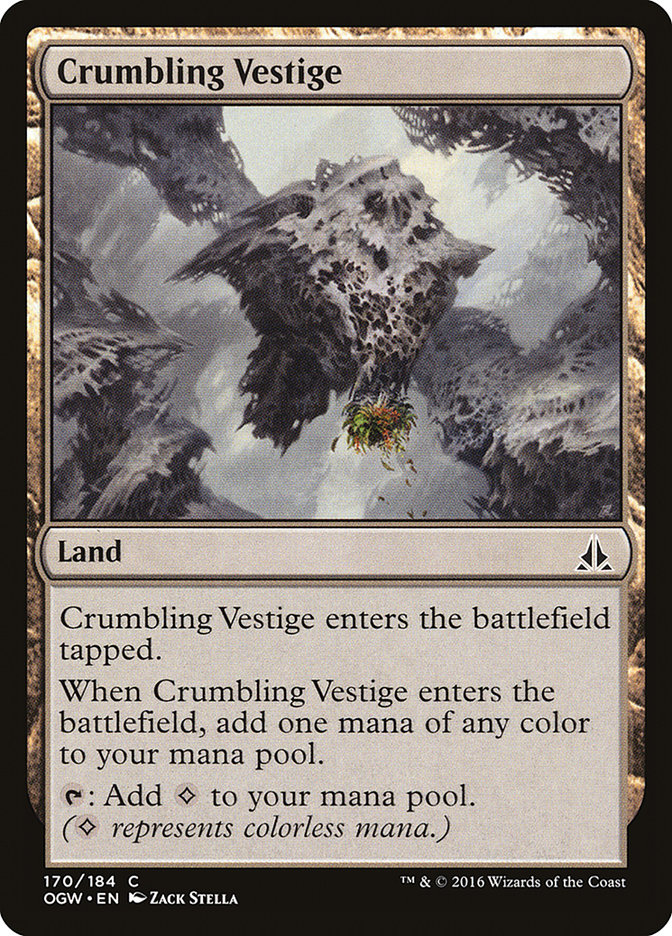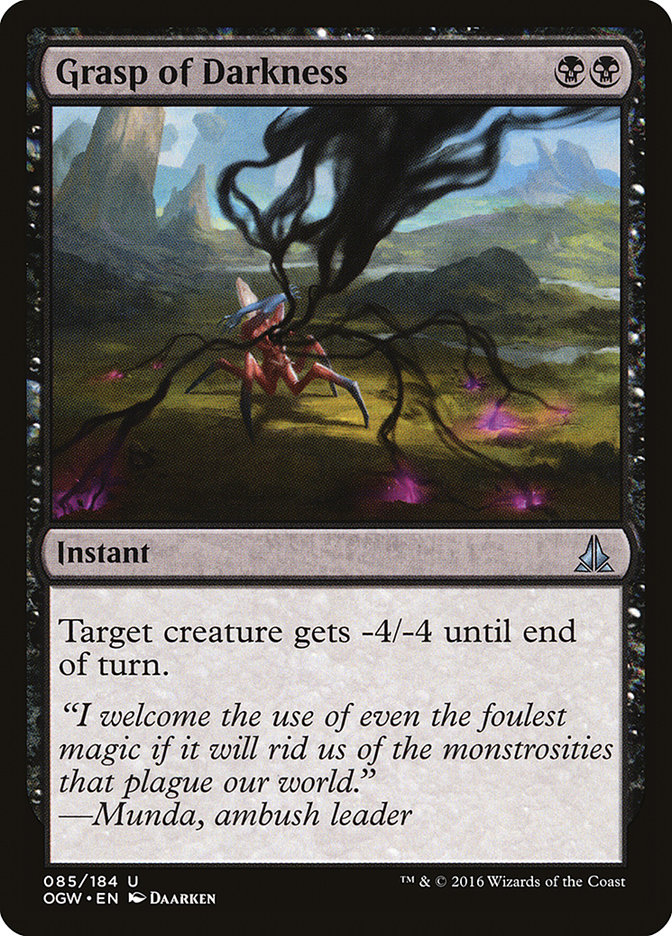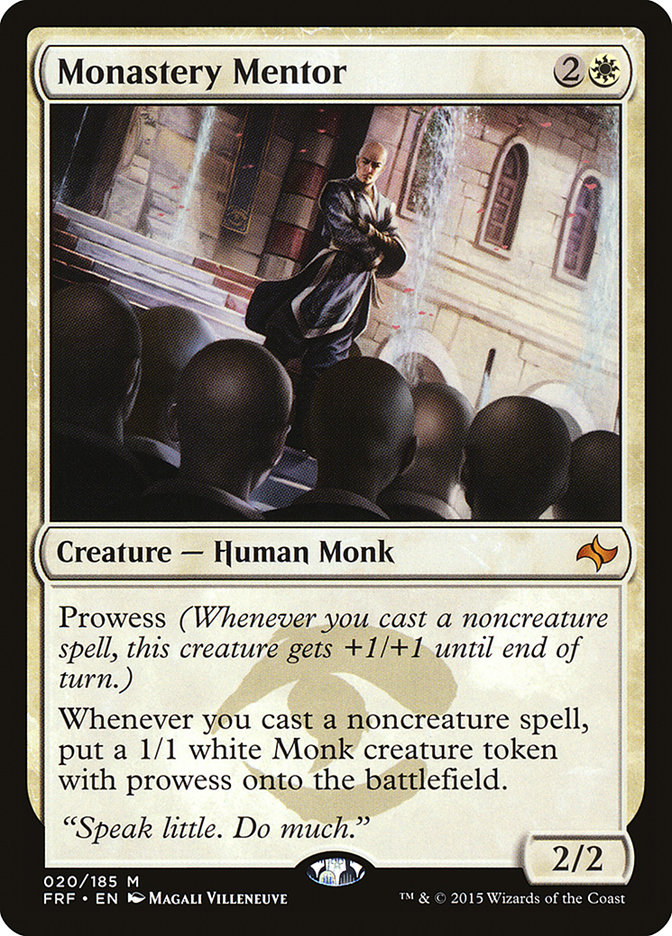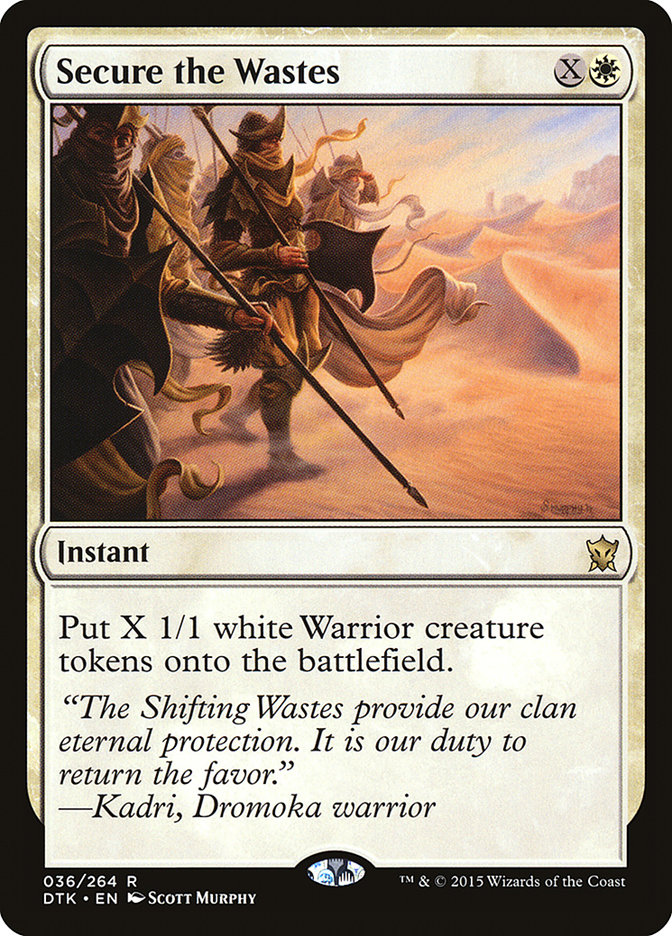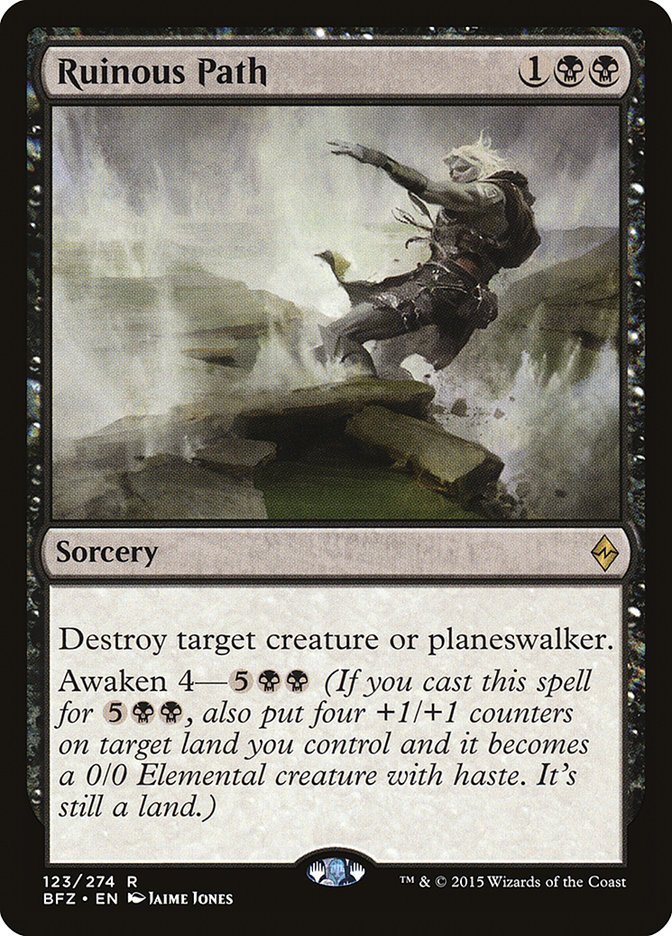With the first post-Oath of the Gatewatch Standard event behind us at #SCGATL, we have a first look at the format with a new powerful set of cards. As expected, we saw mostly minor shifts. The format power level is very high, Oath is a small set, and the set mechanic doesn’t play well with the mechanic that makes the power level of the old format high.
Even then, small shifts are occurring in each archetype and each list. Each deck tells a story about the broader format and how it got to its high finish.
#1: Breadth, not Depth / Wide, not Tall
Creatures (14)
Lands (22)
Spells (24)

Korey McDuffie had a great weekend with Atarka Red, and his list notably pushed forward on a lot of the trends that had been noticeably building up in the deck in recent weeks. His 2 Become Immense, 0 Temur Battle Rage, 3 Reckless Bushwhacker is a big shift from the combo-heavy list Brian DeMars won the first post-Battle for Zendikar Open with at The SCG Tour® in Indianapolis. Now Become Immense is just there because delve is messed up and it is easy to sneak in a +6/+6 on a bonus Goblin token at some point, and Titan’s Strength is now there to turn on surge for your other pump spell for a shorter combo. Sideboard Pia and Kiran Nalaar is another big point in this direction and something I’ve been a big fan of for a while. That card is great, not hard for you to stretch to, and singlehandedly wins games while still being good with your plan A of attacking.
This format has a lot of great spot removal spells. Rally blanked them by being immune to removal and was good. Red has blanked them by moving away from the cards that are potentially awkward against them and toward indifferent threats like Hordeling Outburst.
Red threats are just as much about adapting as the answers to them are. This isn’t a Goblin Guide (or, way previously, Jackal Pup) format where the early threats are good because they lock in tons of free damage and you can use reach to end the game from unreasonable life totals (though Monastery Swiftspear may be better than both of those cards). You have to work for the last six to eight points. This week, that work was going wide. Next week that could be Exquisite Firecraft, and then back to combo. The core stays the same; specifics change a lot.
This deck choice was also really good for this weekend. Traditional logic says Atarka Red is going to be good the first week people are messing around with new things, but I really didn’t feel that way given the printing of two more cheap sweepers. What Korey did was take things to the next level and realize that the two hot decks were Ramp and Rally the Ancestors, both of which beat up on the Jeskai decks that traditionally are well-positioned against Atarka Red and are in turn softer to aggressive strategies.
#2: Real Curve, Bigger than Big, Removal
Creatures (17)
- 4 Leaf Gilder
- 4 Rattleclaw Mystic
- 3 Ulamog, the Ceaseless Hunger
- 1 Conduit of Ruin
- 1 Kozilek, the Great Distortion
- 4 Thought-Knot Seer
Planeswalkers (2)
Lands (25)
Spells (16)

First, this deck also exploits a jump in Ramp. I wouldn’t say it exploits a jump in Rally because they just bounce your mana dork and life sucks, but in mirror matches, faster is just better. With a drop in Fiery Impulse, this list maximizes the odds of going “two-drop ramp” into “four-drop double ramp” into “big things” despite not playing World Breaker.
It also goes in two different directions. Just jamming a third-turn Thought-Knot Seer is interesting, but the decreased numbers on Ugin, the Spirit Dragon for Nissa’s Renewal and Conduit of Ruin implies the goal here is to not mess around and just get right to Ulamog, the Ceasless Hunger. No other card kills opponents quite the same way, and this deck just want to play it as early as often as possible. Again, it’s another great choice for the mirror. Bane of Bala Ged is another faster way to permanently break a mirror match game wide open, whereas World Breaker’s single land destruction can be jumped back through. It’s worth noting that a lot of this high-end change is made possible by Kozilek, the Great Distortion, rendering Infinite Obliteration not an auto-KO there, and Rally pushing the Infinite Obliteration slots towards Kalitas, Traitor of Ghet.
The other change is the use of spot removal. Previously you randomly got raced by Anafenza, the Foremost; Monastery Mentor; or Mantis Rider. Now you can do things about them.
This list is going to have issues as things settle down and removal picks back up, as well as once everyone gets on board with Reflector Mage being both the best and miserable. Being creature-based was the flaw of the early Ramp decks in the format and why they underperformed at the Pro Tour in a field of Mantis Rider decks. Expect the two-drop to fluctuate back toward the less consistent Ruin in Their Wake as the field changes. Also note: if more people move toward go-wide strategies, you can keep going against the grain here as others cut spot removal.
#3: Chandra, Curve Topper
Creatures (10)
Planeswalkers (1)
Lands (27)
Spells (23)

This is basically the same deck as before, but Chandra, Flamecaller does a bunch of really cool things for it. You see so many cards per game that you can find the one copy you can afford to slot in, and it bails you out of a lot of scenarios. Behind a ton on board, especially to Wingmate Roc? Sweeper that isn’t dead against control. Need a big threat that doesn’t die to removal? There. Need to kill their Chandra, Flamecaller when it sticks? Yea, that’s actually a thing. The only awkward part is that you can’t rebuy it for multiple uses the way you can with basically everything else.
#4: Late Green Power
Creatures (25)
- 4 Anafenza, the Foremost
- 2 Warden of the First Tree
- 4 Den Protector
- 4 Deathmist Raptor
- 2 Nissa, Vastwood Seer
- 2 Ayli, Eternal Pilgrim
- 4 Sylvan Advocate
- 3 Matter Reshaper
Lands (25)
Spells (10)

One of the key principles about this format is that games just don’t end. People draw so many cards and the answers are good enough that they just keep doing things until someone randomly dies to being a bit overpowered or bricking off. As a result, cards that increase in power or provide long game advantage are really nice, which is partly why Soulfire Grand Master and Jace, Vryn’s Prodigy have been amazing. They are just always good.
Green’s previous answers on this axis weren’t great, as Warden of the First Tree still died to Fiery Impulse any time prior to you hitting thirteen mana invested, but Sylvan Advocate really doesn’t have this issue. A 4/5 is fine late and amazing with four Shambling Vent and two Hissing Quagmire, while a 2/3 is fine early, not quite as game-breaking but still good. Layered on top of Deathmist Raptor, though, and with Collected Company as a way to find it, you can actually get somewhere with Sylvan Advocate. Even the chip-shot card advantage of Abzan Charm and Matter Reshaper helps build this resilient plan. You are a little light on relevant cards to hit off Collected Company because Den Protector is only worth some fraction of a creature, but this shell is building somewhere good.
Note: once you commit to a ton of creature-lands with Sylvan Advocate, Matter Reshaper is almost a freeroll. You can’t play untapped mana with the fetch-Battle setup if you have to lead on Shambling Vent all the time, and in turn you are pushed towards the sketchier but still valid painlands. Being heavy on green also helps a lot here by letting you skew your non-duals in a specific direction instead of having to branch out and draw awkward hands, though I imagine that still happens with four Shambling Vents, four Caves of Kolios, and basically mono-green spells.
#5: Full-on Value
Creatures (17)
- 4 Kolaghan, the Storm's Fury
- 4 Flamewake Phoenix
- 4 Thunderbreak Regent
- 2 Pia and Kiran Nalaar
- 3 Hangarback Walker
Lands (25)
Spells (18)

Grasp of Darkness is fine, but I’m really excited about Goblin Dark-Dwellers in this shell. The body is still very serviceable, but the real issue is that the Dragons are unreliable in certain matchups because they just die to things. Dark-Dwellers doubles down on Hordeling Outburst and is just generally a two-for-one to help solve this issue. Sideboard is where the card belongs, but it does a good job there.
#6: Remember, Removal Is Good
Creatures (16)
Lands (21)
Spells (23)
- 1 Dispel
- 4 Titan's Strength
- 4 Treasure Cruise
- 2 Temur Battle Rage
- 2 Roast
- 4 Fiery Impulse
- 2 Expedite
- 4 Slip Through Space
Sideboard

This is what happens when people do silly ramp things. I can’t imagine this deck is actually good against people capable of killing a creature or even just bouncing it. But 21 lands also seems really high here. I get that Treasure Cruise is legal to help power through flood, but you are all non-selective cantrips and low-impact spells. You are just going to flood and die a lot.
#7: Maindeck Kalitas
Creatures (13)
Lands (26)
Spells (21)

Kalitas, Traitor of Ghet is a silver bullet here, but I would like to remind everyone it is also a very fine Magic card. Maybe it’s a bit under ratio for the format, but you can just play the card and sometimes you want the 3/4 lifelink. I’m not sure how much it helps versus Rally the Ancestors, but it’s still a good anti-red card if they move away from the combo.
Joe’s deck also has three copies of Silkwrap and four of Jace, Vryn’s Prodigy. I’m willing to believe this is right. It’s just painful to look at Silkwrap and think about how much worse it makes the -3 on Jace, Telepath Unbound.
#8: Innovation via Refinement
Creatures (21)
- 4 Anafenza, the Foremost
- 1 Wingmate Roc
- 4 Siege Rhino
- 2 Tasigur, the Golden Fang
- 4 Warden of the First Tree
- 2 Den Protector
- 4 Reflector Mage
Planeswalkers (3)
Lands (25)
Spells (11)

This deck makes me so happy. It’s really well-built and well-designed.
First of all, we solved the 64-card Ben Rubin issue. Oath of Nissa yields “additional lands” and fixing that also yields additional creatures. It also makes Gideon, Ally of Zendikar so much easier to cast. It’s going to take a little more playing to figure out how Oath of Nissa fits into the whole tapped/untapped mana scheme of the format, but it has to help more than it hurts.
Second, we get Reflector Mage. That card is obscene and I can’t imagine pulling out of the Anafenza into Reflector Mage curve is easy for anyone. It also solves some of the spell vs. land balance issues the deck can have and works great with Oath of Nissa to let it find interaction.
#9, 11, 13, 15: The Enemy
Creatures (28)
- 4 Nantuko Husk
- 4 Elvish Visionary
- 3 Grim Haruspex
- 3 Sidisi's Faithful
- 4 Jace, Vryn's Prodigy
- 3 Catacomb Sifter
- 4 Zulaport Cutthroat
- 3 Reflector Mage
Lands (24)
Spells (8)

This is cheating, but Rally is so streamlined at this point but it’s hard to discuss the differences here. Collected Company into Reflector Mage is so messed up. This is what you have to beat as a baseline for entering the format, right along with Abzan and Atarka Red. It seems very hard to do this. All the lists are basically the same. The shift to Hallowed Moonlight in a lot of the sideboards implies a fundamental shift in the post-board mirror match due to Reflector Mage making it just way too hard to stick an Anafenza, the Foremost for a relevant amount of time, which makes Rally the Ancestors more important.
Also, direct quote from Emma Handy about the deck’s slightly downshifted performance:
“I’m pretty happy that zero Top 8’d to be honest, makes it better for next week.”
#10: Half and Half
Creatures (17)
- 4 Hangarback Walker
- 2 Ulamog, the Ceaseless Hunger
- 1 Kozilek, the Great Distortion
- 4 World Breaker
- 4 Sylvan Advocate
- 2 Thought-Knot Seer
Planeswalkers (3)
Lands (25)
Spells (15)

I’m sad that there aren’t creature-lands here, but Sylvan Advocate is another Hangarback Walker-style early drop that pays you off for ramping. You can somewhat pull a half-Ramp, half-midrange strategy together that has a much better failure mode. I’m not sure this many Advocates is right or if it’s even the right creature for the job, but with it and Thought-Knot Seer, a lot of different angles exist.
#12: Black Eldrazi Is the Truth
Creatures (24)
- 4 Wasteland Strangler
- 4 Reality Smasher
- 4 Thought-Knot Seer
- 4 Bearer of Silence
- 4 Reaver Drone
- 4 Matter Reshaper
Lands (24)
Spells (12)

Oh look, twenty really good creatures and no terrible Ruination Guides was the best list of the beatdown theme deck. I can take or leave Reaver Drone, but if you are going to Ghostfire Blade, you need something to do that with. Honestly, I’m not even too proud to Sludge Crawler, but that might be a little too far.
Crumbling Vestige is really good here as your black spells are early and your best colorless ones are late. It’s almost like a River of Tears!
The only thing I don’t like is zero copies of Flaying Tendrils. I have no idea how this deck beats Goblin tokens without them, even if they play poorly with so many of our own creatures.
#14: Jeff Hoogland Is Good at Being Jeff Hoogland
Creatures (4)
Planeswalkers (8)
Lands (26)
Spells (22)

Jeff just builds decks that defy every single pattern and lesson I felt I’ve learned about deck building. And he just wins with all of them. He isn’t the only person who does this, with Craig Wescoe being another notable name in the same vein. My gut just yells at me to change so much, but looking further, the logic is really self-consistent.
Grasp of Darkness is really above the curve for this format. To play this, you can’t have a lot of basic Plains in our deck or in play, and the fetch-Battle mana would make that basically happen every game and negate the ability to play our BB spell on turn 2. The cost is playing Read the Bones over Painful Truths, which takes away some of the draw to game 1 Duress, as it’s harder to override the card disadvantage. Same with Monastery Mentor, which is obviously worse with less card draw. Seeker of the Way is effectively our other two-mana removal spell for things that go around our Grasp of Darknesses, just blocking or bashing and gaining life to beat Goblin tokens.
The powerful interaction in the deck is just Secure the Wastes plus pump spell. That’s why there are five planeswalkers that do that. The assumption is that Secure the Wastes is insensitive to removal, as are the planeswalkers, which is how you beat Jeskai decks that draw more cards. Who cares about your third extra card being a Shock when that does next to nothing against my threats?
Ruinous Path is a concession to needing more creatures and the lack of creatures being a potential issue against Jace, Vryn’s Prodigy and Gideon, Ally of Zendikar. Both can kill relatively quickly when unpressured, and you just need to clear them out of the way. Same thing applies to the two Utter Ends. Clunky, but Grasp of Darkness means you can afford a bit of clunk.
This deck is obviously super exploitable, but it is basically built for a single two-drop removal spell. If that card is good, this is what the deck probably looks like that plays it.
#16: The Right Unspeakable Horror for the Job
Creatures (16)
Planeswalkers (2)
Lands (26)
Spells (16)

I was leading somewhere with my early comments about Sylvan Advocate not being the right half-and-half Ramp attacker to play, and that is because Matter Reshaper was so obviously great when I saw this list. Losing it to Kozilek’s Return is almost a non-issue because you are nearly a coin flip to Rampant Growth off of it! Sadly, it plays somewhat poorly with Hangarback Walker, but that seems like a reconcilable issue as putting the 0/0 into play is optional and it can just go to your hand.
Keep in mind: This is only the first week. The solid performance by the Black Eldrazi deck implies at least one new contender waiting to enter the metagame. The second week is typically the watershed moment where someone finds something really special. The obviously good cards have been obviously winning, but there’s a lot here that interests me in terms of reshaping the format. If the Abzan Company deck abandoning fetch-Battle mana is any indicator, this could be the start of something big.



